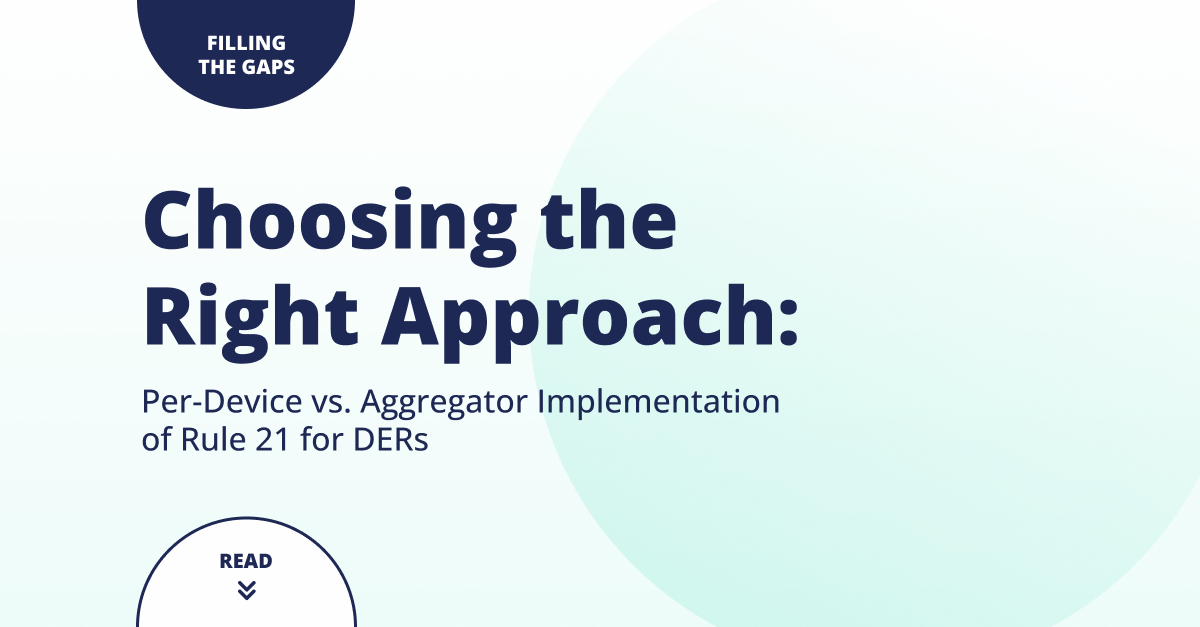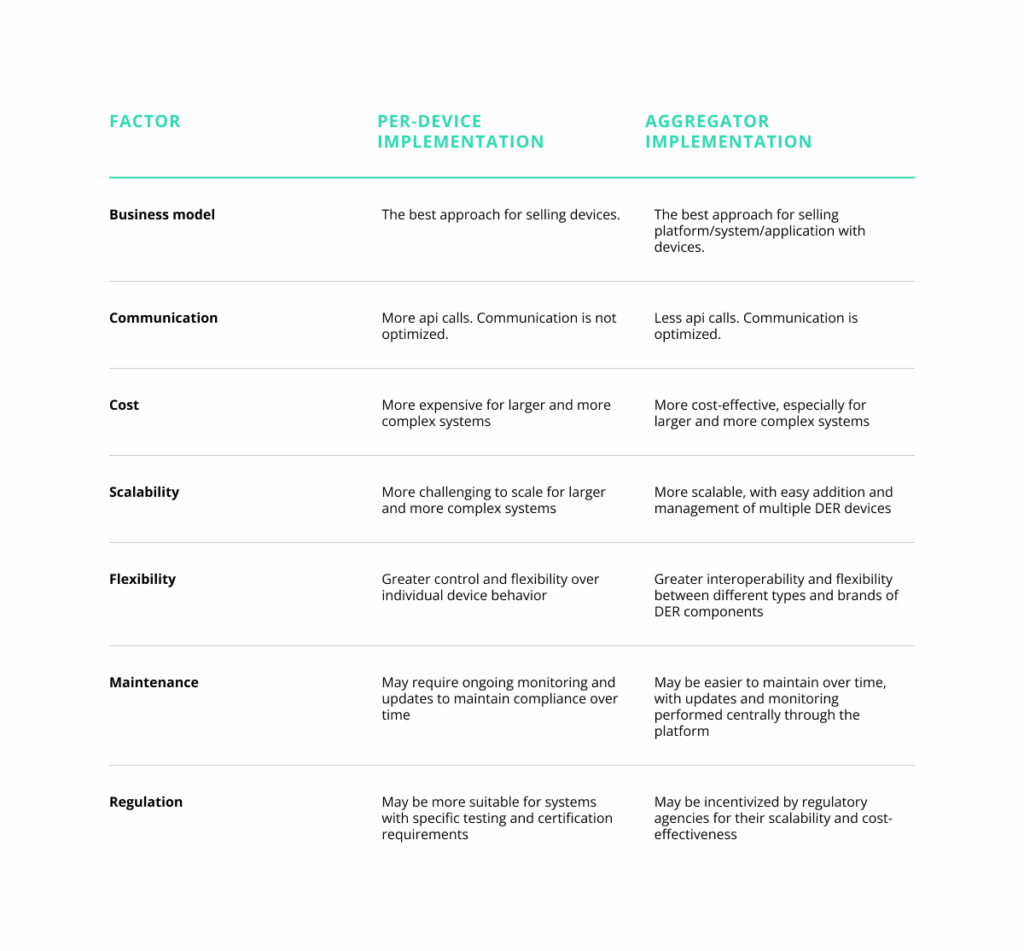Choosing the Right Approach: Per-Device vs. Aggregator Implementation of Rule 21 for DERs

As the adoption of distributed energy resources (DERs) continues to grow in California, compliance with the state’s Rule 21 standards for interconnecting those resources to the electric grid becomes increasingly essential. DERs such as rooftop solar panels, battery storage systems, and electric vehicles can help to reduce greenhouse gas emissions and support the transition to a cleaner energy system. Still, they also pose challenges to the traditional grid infrastructure. Rule 21, which outlines technical requirements for DER interconnection, is designed to ensure that these resources are safely and reliably integrated into the grid.
One key decision that DER system developers and operators must make is how to implement Rule 21 requirements: on a per-device basis or as an aggregator DER. Per-device implementation involves testing and certifying each DER component individually for compliance with Rule 21 standards. In contrast, the aggregator implementation uses a centralized platform to aggregate and manage multiple DER devices. Each approach has its advantages and limitations, and the choice depends on various factors. The biggest one? The client’s business model. If the client wants to independently sell Inverters, having DER direct communication would usually be a better approach. But in case the client wants to sell Inverters with platform/system/application, choosing DER aggregator would be a much better approach. There are also other factors that one should consider, such as the size and complexity of the DER system, available resources, and regulatory requirements.
In this article, you will be able to read about the differences between per-device and cloud-based Rule 21 implementation that will hopefully help DER stakeholders make informed decisions about which approach is best for their specific needs.
Implementing Rule 21 Requirements per Device
Per-device implementation of Rule 21 requirements involves testing and certifying each DER component individually for compliance with the technical requirements outlined in the rule. This can be a time-consuming and expensive process, particularly for larger and more complex DER systems. For example, if the company A has only 1 inverter model (INVERTER_A), they have to certify only this inverter. In case the company has 100 inverter models (INVERTER_B_1, INVERTER_B_2, etc.), they will have to certify each of them.
To implement Rule 21 requirements per device, DER system developers and operators must follow a rigorous testing and certification process. The testing process includes various technical parameters, such as voltage and frequency ride-through, reactive power capabilities, and power factor control. After the testing, each DER component is certified for compliance with Rule 21, and a detailed report is generated to demonstrate compliance.
Implementing Rule 21 Requirements as an Aggregator DER
Aggregator implementation of Rule 21 requirements involves using a centralized platform to aggregate and manage multiple DER devices to ensure compliance with the technical requirements outlined in the rule. This approach offers several advantages over per-device implementation, the main one being optimization of communication. This leads to easier scalability and maintenance, cost-effectiveness, greater visibility, and control over the DER system.
To implement Rule 21 requirements as an aggregator DER, developers and operators must choose a suitable platform capable of aggregating and managing multiple DER devices. The platform must support communication protocols and performance requirements for smart inverters and other DER equipment to ensure grid stability and reliability. Once the platform is set up, DER devices can be added and managed centrally through the cloud-based system.
Aggregator implementation of Rule 21 requirements also provides flexibility and interoperability that per-device implementation may not offer. The use of a centralized platform allows DER components from different manufacturers and with various settings to be integrated into a single system as long as they are compatible with the platform’s communication protocols and performance requirements.
Comparison of Per-Device vs. Aggregator Implementation

When deciding between per-device and aggregator implementation of Rule 21 requirements, DER system developers and operators must consider the advantages and limitations of each approach. Here is a comparison of the two approaches:

In conclusion, implementing Rule 21 requirements is essential for integrating distributed energy resources into the electric grid in California. There are two main approaches for doing so: per-device implementation and aggregator implementation. When deciding between these two, DER system developers and operators must consider several factors, the biggest one being the client’s business model. Other factors include the size and complexity of the DER system, available resources, and regulatory requirements.
A per-device implementation may be more suitable for smaller and less complex systems that require greater control and flexibility over individual device behavior. An aggregator implementation may be more suitable for larger and more complex systems that require easier scalability, maintenance, greater overall visibility and control over the DER system. The choice of implementation approach ultimately depends on the business model as well as specific needs and circumstances of the DER system. By carefully evaluating the advantages and limitations of each approach, DER stakeholders can choose the one that best meets their specific needs and circumstances.
contact us
Need expert guidance on your next energy project?
Reach out to us and discover how Codibly can offer tailored solutions to drive your business.